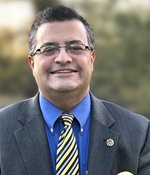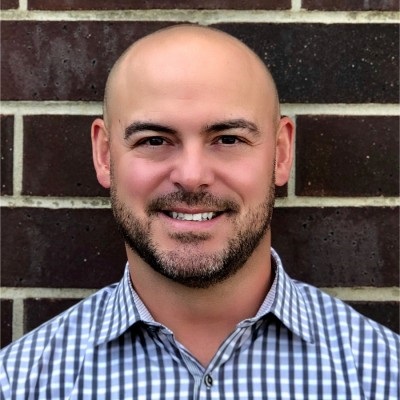What are the most important things to consider when implementing predictive models into your claim handling process?
Make sure you have the right people on the project team. Integrating predictive models into a business process is really an exercise in change management. Implementing change is a team sport. You should consider a multi-disciplinary team that involves IT, the predictive model team, and the business unit (say the Claims department). IT can help with system integration and deploying the final model.The predictive analytics team will need the help of the Claim department to develop a model that solves the identified business need.
Ensure that you have leadership support for the project. Integrating a predictive model into the business process takes time and resources. Discuss the resource commitment with leadership upfront. Make sure there is an understanding and support for seeing the project through. Communication is key make sure leadership, the project team, and other key stakeholders are aware of the project’s importance. Change requires constant reinforcement.
Figure out the exact business need you are attempting to automate with the use of a predictive model. One size does not fit all. Suppose you would like to identify claims that would benefit from nurse case management. Avoid using a model that identifies claim severity to make the decision about nurse case management. Consider training a separate model that is specifically tuned to identify opportunities for involving a nurse case manager.
A predictive model will return a score or probability for a given claim. Sometimes that information is categorized into buckets – say low, medium and high. For an adjuster, the immediate question is, “What has the model identified that I have not considered?” This is particularly true when there is a difference between a model’s evaluation of a claim and that of an adjuster. Give consideration to what additional information would be helpful for the adjuster to better understand a prediction. For example, maybe a model is trained to be sensitive to long-term opioid use. If the predictive model identifies this situation on a claim, the score moves to a higher value. In this example, provide both the score and information about the presence of extended opioid use on the claim. Not only does it help validate the model in the eyes of the adjuster, but it also may speed up the time towards determining an appropriate intervention.
Ensure close collaboration with the modeling team. Provide feedback on a regular basis. Look for outliers and missed predictions. Work with the modeling team to understand the predictions that do not make sense. If an adjuster does not agree with a prediction, document the reasons. This information can be used to improve future generations of the model.
Business expertise is crucial to building accurate and reliable predictive models. In most instances, a business subject matter expert is far more in-tune with the dynamics of the business need solved by a model. You will find that the best results occur when there is a free-flow of information between the business and the modeling team.
Building predictive models is an iterative process. Do not be discouraged if your first model does not perform as well as you expected. A predictive model is never perfect. Learn from the model – what it gets right and what it gets wrong. Provide this feedback to the modeling team. As I’vepointed out, success is dependent on team collaboration.
The business subject matter experts should ask questions about the data. The modeling team can then explore the data and provide answers to the questions. For example, an adjuster may want to know how many hospitalizations result because of slips and falls.Your findings can lead to new variables that will make your models more accurate.
Once you have a production model, set up challenger models with new variables that may enhance performance of the prediction. Make sure the team continues to explore the problem and look for ways to improve.
Leveraging predictive models to speed business decisions is not a once and done endeavor. It takes patience and commitment to the process.

By: Brian Billing
Vice President of Predictive Analytics, Midwest Employers Casualty
Summary of Qualifications
With over 25 years’ of technology experience, Brian has a proven track record of leading efforts that turn corporate data assets into actionable business intelligence. He has experience in a range of industries include banking, investment services, insurance and health care. In addition to his extensive technical skills, he is also licensed to practice law in two states. Brian is a regular presenter on the subject of predictive analytics, machine learning and analytics.
Responsibilities
Brian is responsible for leading the predictive analytics team at Midwest Employers Casualty.
Business Experience
Brian has 10 years' experience with Midwest Employers Casualty. He formed the predictive analytics team at Midwest in January 2013. Prior technical / analytical business experience included work in banking, investment services and health care.
Education
St. Louis University - School of Law
Juris Doctor
St. Louis University - School of Business
Bachelor of Science in Business Administration - Management Information Systems
Marijuana is one of the hottest topics being discussed today. Currently, 24 states and the District of Columbia have legalized medical marijuana in some form and four states and the District of Columbia have legalized the use of recreational marijuana. However, due to these changes in legislation in many states, employers are left feeling hazy. Often, employers are unclear about whether they can still enforce a drug-free environment. That answer depends on where you live.
Under federal law, marijuana remains illegal and is classified by the Controlled Substances Act as a Schedule 1 drug. For that reason, employees cannot find federal protection for medical marijuana use under the Americans with Disabilities Act, which has an exception for “illegal drug use.”
Each state law is very unique. A majority of states do not address medical marijuana in the workplace and courts have been reluctant to provide these employees any protection against termination. In at least nine states (Arizona, Connecticut, Delaware, Illinois, Maine, Minnesota, Nevada, New York and Rhode Island), the medical marijuana statutes specifically provide job protection to employees who use medical marijuana. The specific state protections range from classifying medical marijuana as a “disability” and triggering the interactive process and possible reasonable accommodations to allowing an employer to enforce a zero-tolerance policy and discipline a medical marijuana holder for violating that company policy.
The most recent case attempt to find protection for employees in the majority of states that do not provide specific protections in the statute was the case of Coats v. Dish Network, LLC. The Colorado Supreme Court held that the Lawful Use Statute, a statute intended to protect workers who engage in legal activities during non-work hours that are not condoned by their employers, did not protect medical marijuana users. Marijuana remains illegal under federal law, without any exception for medicinal purposes, or any express allowance for a state to legalize it for any such purpose statute, and thus was not a “lawful” activity.
If you receive notice of a failed drug screen and your employee presents a medical marijuana card, do you know what to do? To clear the haze, work closely with the risk management, insurance and legal teams to ensure that policies and procedures comply with your specific state law and your options.
Maintaining clear policies and procedures is the most proactive way to address this emerging issue. Examine drug testing policies, any drug-free workplace rules, whether there is federal oversight on any of your operations or you have safety sensitive positions.
When you decide on the plan that is right for your public entity, ensure consistency by publicizing the adoption of the policies in your personnel manual or employee handbook.
For more information, the PRIMA Cybrary may include sample policies in which risk managers can refer to as a resource.

By: Sarah R. Schmitz, Esq.
Claims Attorney, OneBeacon Government Risks
Summary of Qualifications
Sarah Schmitz is a Claims Attorney at OneBeacon Government Risks at its headquarters in Plymouth, Minnesota. Prior to joining OneBeacon, Sarah practiced at Minneapolis-based Meagher & Geer, LLP, where she focused her practice on insurance coverage and real estate. She also served two terms on the Minnetonka Planning Commission.
Sarah is a past panelist and presenter at Claims Litigation Management National Conference (CLM), the Professional Liability Research Bureau (PLRB) Regional Conferences, and the American Conference Institute National EPL Seminar, and PRIMA's Annual Conference. Sarah has also co-authored portions of the Minnesota Insurance Law Deskbook, as well as articles in Claims Magazine, Public Risk and the Hennepin County Lawyer.
Schmitz graduated cum laude from Hamline University School of Law in St. Paul, Minnesota. During law school, she served as an editor of the Hamline Law Review and published Preventing Mudslinging in Chambers: Alternatives After the Demise of the Announce Clause in Republican Party of Minnesota v. White.
Responsibilities
Sarah currently handles a wide range of claims including employment, law enforcement, and public officials errors and omissions claims brought against municipal entities. In her seven years with OneBeacon, she has also handled legal malpractice, real estate errors and omissions, employment and directors and officer’s claims.
Education
J.D., Hamline University School of Law
As a risk manager, you rely on “numbers” for many aspects of your job. You assume that numbers tell the story. You might think that numbers don’t lie, but actually they can.
I have found over the years that numbers generated by trustworthy people and institutions don’t really lie by themselves, but that their interpretation can often be misleading. Let’s look at a couple of examples.
One of my favorite running backs had what looked like a great game recently. He averaged 7.6 yards per carry, while both the rest of his team and the opposing team averaged about 3.5. Way to go! Well, only if your measure of “average” is the mean (the arithmetic average). Had we looked at an alternative measure of central tendency such as the median (the middle-most score), we would have concluded the opposite: his median performance was only 1.6 yards per carry, but he did have one (lucky?) 70 yard play? Awesome day or terrible day?
The mean - median argument impacts on almost everything we look at in disability. Historically, we almost always look at the mean, but keep in mind when looking at, for example, disability durations or costs, that a few individuals at the extreme end of the distribution will have an outsized impact on the mean but not on the median (with medians, every “person” is a data point, whereas with means every disability day or every dollar is a data point). So, “average” disability durations and costs are invariably much higher when reporting means than medians. So, which is right? Both and neither, depending on your interest or your customer’s interest. I personally always like to look at both to get a fuller picture.
One other example. Do you ever use Uber or Lyft? If so, after each ride you are asked to rate your driver on a 5-point scale, and the driver also rates you. Have you ever seen any driver with a rating below 4.8? Drivers will practically beg you to give them a 5, crying that they would lose the job if they average (mean) less than around 4.7. So, what do we do? Unless they end up in an accident, most people will just give a 5 and hope that the driver rates them likewise, and everybody is happy. But what about the 5-point rating scale? It’s a fake, it’s actually a 2-point scale (acceptable / unacceptable), but using a 5-point scale allows the use of a number manipulation (calculating the mean) that gives an outsized impression of quality (my driver averages 4.95, he / she must be awesome!). The scale used to present numbers is important, and it can be misleading.
Sometimes the underlying scale changes over time– a bit like moving the goal posts, which makes comparisons between numbers questionable. Numbers can be very useful, but they can also be manipulated to mislead you. Always be skeptical, and make sure they tell you the real story. One useful strategy is to ask yourself: Is somebody trying to sell me something with these numbers? If so, is there some other way I could look at the underlying data?

By: Michael Lacroix
Medical Director, The Hartford
Summary of Qualifications
Dr. Lacroix is a licensed psychologist in Florida. He has worked in the overlapping areas of disability and workers’ compensation for the last 30 years, in a variety or clinical, management, program development and consulting roles. Prior to joining the corporate world (Concentra, then Coventry, then Aetna, and now The Hartford) Dr. Lacroix held academic appointments, he developed a large clinical practice focused on assessment, treatment, and rehabilitation of injured and disabled workers, and he also carried out grant-supported research over many years, resulting in over 100 peer-reviewed publications and papers. He is a frequent contributor at industry conferences and publications, including PRIMA.
Responsibilities
* Consultations (internal) with behavioral health clinicians re: difficult cases, etc.
* Consultations (external) with brokers and customers / potential customers
* Thought Leadership:
- Staff training
- Innovation: Pilot project development
- Innovation: Research
- Medical Guidance documents
- Conference presentations
- Articles for publications
Professional Affiliations
American Psychological Association
International Critical Incident Stress Foundation
Licensed Psychologist: FL license PY6750
Education
B.A. (Summa cum Laude), Psychology, Florida Atlantic Univ., 1970.
Ph.D. in Psychology, McMaster University, 1976.
1981 - 2005 Registered Psychologist in the province of Ontario.
1998 - 2004 Licensed Psychologist in Nevada.
2003 - present Licensed Psychologist in Florida (PY6750).
With tightening budgets and pressure to remain staffed, many public sector risk managers have taken an industrial athlete approach to their workers’ compensation programs. The term “industrial athlete” refers to any employee who makes a living using mental and physical talents to perform their job every day. These occupations frequently require strength, flexibility, coordination and endurance, just like a professional athlete. In municipalities, it is easy to determine who might fall into this category: police, fire, EMS, and corrections employees. But, even within the public sector, there are others who customarily exert themselves as part of their essential job duties. Consider school bus drivers – they have to climb stairs, have quick reaction time on the road and aid students who are unable to get in and out of buses.
Savvy risk managers consider their employees (such as deputies, firefighters and school bus drivers) industrial athletes, investing in strength training, setting expectations with medical providers and preparing for unavoidable injuries by setting protocol for prompt treatment and recovery. The outcome of these programs has resulted in fewer lost work days, lower claims frequency, and improved employee-employer relationships throughout the claims process, with a focus on the employee's well-being.
Elite athletes have robust and disciplined training programs to prepare them for the pitch, field or pool. When injured, there are protocols for getting the athlete back to health and minimizing absence from the playing field. However, not every employee in the public sector can conduct rehabilitation at an elite level. We can bring these concepts to the industrial athlete in the public sector. Leadership buy-in is crucial to the success of an industrial athlete program – and leaders love data-driven results. By demonstrating the effectiveness of the industrial athlete model on lost work days, you can help prove out ROI.
In 2016, with tightening budgets and temporary indemnity costs on the rise, one public sector client determined that a change needed to be made in their program to lower costs and remain suitably staffed to serve their constituents. Working with state and union leaders, the risk manager instituted an industrial athlete program, clearly defining light duty programming and expectations across departments, resulting in a 9% reduction on benefit days over the previous year. On average, the new model shaved 51 lost work days per 10,000 employees.
Once a light duty program has been implemented, the next step is to coordinate with the managed care provider to ensure that employees are directed to providers who have the best outcomes for return to work. Working closely with the medical community, and reinforcing a positive mentality regarding capability of the injured worker, the focus shifts from what the injured worker can't do to what they can do. By drawing the focus to the injured worker's capabilities, rather than restrictions, the organization is able to provide light duty tasks.
By establishing a philosophy that the occupational injury team is able to assist the employee to a recovered state through early medical intervention, understanding the return to work program, and supporting the employee post-recovery (and even pre-injury), public sector risk managers will successfully implement the industrial athlete model.

By: Kristy Sands, CWC
Vice President, Gallagher Basset
Summary of Qualifications
Kristy is a claims professional with 2+ years experience in all lines of coverage. She specializes in public sector, education and non-profit clients. As an account manager, She was part of the team who partnered with a public sector client in their loss prevention and wellness program, where the industrial athlete model was embraced. She has written and spoken on this and other risk management topics for a decade.
Responsibilities
As the vice president of communications at Gallagher Bassett, Kristy helps ignite conversation and satisfy intellectual curiosity about Gallagher Bassett’s products and services, working in unison with executive and senior level management, to generate organic growth, client retention, and employee engagement. She is the editor-in-chief of Gallagher Bassets's award-winning internal communication vehicles (The Connect Series) for 4,000 employees with focus on sales, account management and claims operation. She creates and edits relevant content for internal and external distribution on insurance trends. Kristy generates new ideas to promote the company's brand internally and externally, and apply processes learned in account management and claims operations to ensure productivity and connection to the TPA product.
Business Experience
Aside from her work in communications and assistant vice president of account management, Kristy has served as a single point of contact for a client-focused service model. She compiled and presented sophisticated data to demonstrate where client capital is spent and makes viable suggestions for improvement to the program. Kristy is also proficient in crisis management.
As a claims manager, Kristy led a team of 18 workers' compensation professionals handling claims for large national accounts, local accounts and municipalities, as well as self-insured clients of various sizes. She participated in claims strategy sessions with clients and claims staff, as well as in sales calls as claims operation representative for Florida. Kristy coached and trained staff on claims issues, time management supervisory and staff growth, and presentations.
Professional Affiliations
Dive In Festival Miami Co-Chair (2018 & 2019)
Winner: PR News Digital Awards for Internal Communications
Winner of the 2018 Comp Laude People’s Choice Award
Winner of the 2013 Excellence in Account Management
Conference speaking engagements: WCI360, National PRIMA, FERMA
Member: Alliance of Women in Workers’ Compensation
Education
BA Communications from University of Pittsburgh.
Certified Workers Compensation designation
The primary objective of an ERM program is to make risk management an integral part of organizational strategic and business planning processes, as well as a regular part of decision making. ERM provides a framework for using quantitative and qualitative information to evaluate risks and opportunities. ERM can also help transform the organization’s risk culture from risk averse to risk optimized.
An ERM program can demonstrate value right away by broadening the conversations about risk. Beyond operational or insurable risks, ERM identifies risks and opportunities in various areas such as reputational risk, strategic risk, compliance, workforce and safety risks. These risks can be prioritized and evaluated in an Enterprise Risk Register. It can take the form of a heat map displaying significant challenges and opportunities. It’s a way to gather data to assess the risks and document countermeasures.
To ensure the Risk Register reflects the broader goals of ERM, the risks identified do not need to have a significant loss history or the protection of an insurance policy. For example, the risk of inadequate succession planning can be a high priority risk on an Enterprise Risk Profile. There is no significant loss activity associated with it, but the operational and strategic risks are clear – loss of institutional knowledge. There is also opportunity to be gained from retirements. An opportunity to increase diversity, to have the workforce reflect the community served and to find new and innovative ways to serve customers.
ERM is similar to traditional risk management when it comes to risk assessment (identify, analyze, select, implement, monitor). However, ERM aligns to the organization’s mission and objectives, and takes into account the amount of risk that leaders are comfortable taking. There are many helpful tools to reconsider how to think about risk. One such tool is the Risk-Value curve, which comes from the Consortium for Advanced Management International. It depicts the relationship between risk and value along four zones. In the first zone, risk is low but so is value. This area shows that too much emphasis is placed on mitigation and avoidance of risks. An organization that makes decisions in this zone is inefficient, prioritizing compliance and risk mitigation over opportunity and value creation.
In the second zone, risk is optimized. The organization is taking on risks up to its tolerance level and maximizing value. Once the high point of the curve has been passed, organizations are in a high risk-interaction zone and key risk indicators become extremely important. In the last zone, the organization may be in crisis mode and should actively seek risk management tools (insurance, crisis management, public relations) to pull itself out of the crisis and into a more optimized zone. Decisions need to be quick and creative.
Focusing on risk and value together starts to change attitudes about risk. Conservative behaviors around risk aversion and mitigation transform into a balanced and informed risk-taking culture. This can be the beginning of a risk culture change: attitudes shape behaviors which form culture.
ERM can help shift an organization’s risk culture away from risk-averse decision making by providing the tools and support for balanced risk taking. In this way, ERM can help an organization to meet objectives and make progress toward its mission.

By: Jennifer Hills
Director, Office of Risk Management Services, King County (WA)
Summary of Qualifications
As director of the King County Office of Risk Management Services, Jennifer leads a team of dedicated and talented risk management professionals who were nationally recognized in 2018 with the PRIMA Risk Manager of the Year and RIMS Risk Management Honor Roll awards. Jennifer is passionate about changing King County’s risk culture from risk-averse to one that is taking balanced risks within the established risk appetite. Jennifer is a frequent speaker on enterprise risk management and risk-value management. King County, which includes the Seattle-Bellevue metropolitan area, is the 13th largest county in the United States and serves a population of over 2 million.
Responsibilities
Strategic Planning
Employee Engagement
Risk and Value Management
Program Governance and Execution
Enterprise Risk Management
Insurance Portfolio Management
Business Experience
Director, Office of Risk Management Services, King County, WA (2003 – Present)
Establishing a culture of balanced risk taking through ERM and a risk-value framework
Integrating Enterprise Risk Management methods and processes in strategic and budget planning to comprehensively manage risks and seize opportunities in alignment with King County’s values and within established risk appetite
Managing a broad and effective risk management program using self-insurance and commercial insurance coverage for general liability, workers’ compensation, property, aviation, marine, cyber, employment practices, public officials, crime, pollution, and other exposures
Providing strategic direction for risk management lines of business through a staff of 30 and an $84 million biennial budget
Managing claims and litigation equitably and responsively
ERM Experience
Implemented ERM in King County, including:
Enterprise Risk Register
ERM Work Group
Risk Profile required by every county agency as part of business planning/budgeting
Success of the ERM program has led to a risk culture change from risk averse to optimized
Professional Affiliations
Past President of Washington Chapter of PRIMA
Current member of PRIMA and RIMS
Education
University of Washington, Bachelor of Arts in Business Administration
Insurance Institute of America, Associate in Risk Management and RMPE
National Alliance for Insurance and Education, Certified Risk Manager
Diversity issues or employee relation issues (among people who are different) typically involve two people. The perpetrator or the initiator of the behavior is one party and the target or the receiver of the behavior is the second party. The diversity issue or incident (sometimes it is one “moment of truth”) is defined as a behavior, an action, or a series of behaviors (a pathology or trend) that one party (the target) feels or concludes based on the initiator’s behavior(s). The target may interpret the initiator’s behavior(s) as wrong, inappropriate, disrespectful, discriminatory or illegal.
First – We Don’t Know the Intentions of Others
We all mean well. I never question the intent of any person’s actions. We actually don’t know the intentions of the other person but we assume their intentions based on the behavior we see, how we react or the kind of relationship we have with the perpetrator. This is the first mistake. We should look at the behavior(s) in question and only the behavior(s). Looking just at the face value of the behavior is a good start.
I tend to focus on the actual behavior and how that behavior might affect or influence other people. In other words, I focus on the impact the said behavior(s) has on other people. The consequences of any action, how the behavior might be received or perceived or experienced, is what I tend to scrutinize.
Second – “I Didn’t Mean It”
I find too many people will get defensive when the target confronts the perpetrator about the behavior(s). The perpetrator typically responds with, “I didn’t mean it the way you took it.” Often, in my travels, people don’t want to be held accountable for their actions. Unfortunately, this does not take the “sting” out of the behavior(s). What matters is what you said, not what you meant.
What Is Appropriate?
Don’t take it personally – apologize for your comment. Don’t try to avoid your responsibility – step up to the plate. Don’t focus on your intentions – no one knows your intentions. Try to put yourself in the target’s shoes and understand their feelings. Put your feelings aside. This is not about you – the perpetrator – this is about the target. Try to empathize with the target. Apologize and ask the target to always come and share with this person their feelings whenever they feel wronged. You want to be perceived as humble, approachable and “bigger” than any one incident. What you don’t want to do is seem defensive or stubborn. Reach out! This may be the wakeup call that you need to improve the relationship. Misunderstandings are more likely to arise among strangers or people who have strained or weak relationships.

Summary of Qualifications
Mauricio is president and CEO of The Diversity Training Group out of Herndon, VA. Mauricio earned a BA from University of Virginia and an MBA from The George Washington University. He is a diversity and inclusion strategist, consultant, trainer, executive coach, expert witness, sexual harassment prevention trainer. He also trains and provides consultation on the topics of conscious and unconscious bias, toxic employees, toxic workplaces and emotional intelligence.Mauricio has trained or presented in every state, aside from North Dakota, as well as in over 75 countries.
A statement of values (SOV) is a declaration to insurance providers indicating which properties your entity intends to insure. For risk management professionals concerned about property risk exposures, an up-to-date, accurate SOV is critical.
Maintaining basic information and insurable values alongside detailed property data can help ensure your organization is receiving the proper insurance coverage at the best rates. Here are three ways you can ensure your SOV is working for you.
The Value of Basic Building Information
An SOV must include at least a name, address, square footage, occupancy and replacement cost for each property listed. To help ensure you are properly insured, there are a few things you can look for among this basic data.
At the highest level, make certain that all properties you wish to insure are reflected on your SOV and the properties you no longer wish to insure are removed. You’d be surprised how often these scenarios occur.
Taking a deeper dive, it is worth examining your data for replacement costs which are really low or really high as well as square footage numbers which are rounded significantly. Having erroneous information in these fields may mean you are over- or under-insuring your property.
ISO Construction Class Matters
ISO Construction Classifications correspond with the combustibility of a building. Two important factors in determining a building’s ISO Construction Class are the material used in the construction of the building and the amount of time a passive fire protection system can withstand a standard fire-resistance test.
Providing an underwriter with a building’s ISO Classification allows them to better estimate the potential for and the amount of damage that might be caused by a fire. In a building with a classification of 1 (Frame/ Combustible) a fire will spread more quickly and damage more of the building than in a building with an ISO Classification of 6 (Fire Resistive). Pair that with additional COPE (Construction, Occupancy, Protection, Exposure) data like nearest fire hydrant and an underwriter can really get a true picture of your fire-related exposures. Buildings which are less susceptible to damage from fire can be insured at a more favorable rate than a building which may sustain more damage.
Collecting Secondary COPE Data Can Help
COPE data includes characteristics such as type of construction material used, number of stories, fire protection and more. Secondary COPE characteristics relate to the building’s susceptibility to damage from windstorms or seismic activity. Both COPE and secondary COPE data help present the likelihood that an organization will experience losses due to a catastrophic event and quantify the potential property losses. In the absence of this data, some insurers and catastrophe modeling programs automatically assume a worst case scenario.
For example, providing underwriters with data like roof pitch, presence of roof straps, details about windows and presence of objects that may become missiles help these modeling programs better understand the likelihood that your building will sustain damage in the event of high winds. As with ISO Construction Class, buildings which are less susceptible to damage from windstorms or seismic events can be insured at a more favorable rate than a building which may sustain more damage.
In addition to helping secure the right insurance coverage at the best rate for your organization, an accurate statement of values supports informed decision making, provides proof-of-loss documentation, gives you more insight into your risk exposures, and can help speed up processes like renewals and claims.

Shaun Callahan
Vice President, AssetWorks Risk Management Inc.
Summary of Qualifications
Shaun currently serves as vice president of business development for AssetWorks Risk Management Inc. In this role, Shaun oversees the contractual agreement, budgetary control, and project execution of the property insurance appraisal and risk management software businesses. Prior to this role, Shaun spent many year conducting and managing property insurance appraisal projects for risk pools, States, and other public entities. Throughout the year, you can find Shaun at industry conferences like AGRiP, STRIMA, PRIMA, or RIMS.
Education
Bachelor of Arts Degree, Bethany College, West Virginia
In a world full of constant connectivity, the potential for risk continues to be on the rise. That’s why reactive response is no longer enough. Think about it: In this day and age, a simple photograph captured by cell phone at an inopportune moment can make or break a business.
Fortunately, there are proactive ways that organizations can deter risk from even happening. Here are the top 3 reasons why proactive tools are the new reactive solutions:
Anonymity is the leader - In the risk mitigation space, there are a number of tools in place that allow people to speak up when something may be wrong so that the situation at hand can be course corrected before it turns into an emergency. Anonymity is an important factor in the risk mitigation space because people share what they see more often when they do not fear retaliation or retribution.
While anonymous reporting is really the minimum threshold you need to get people to report, it can be flawed because there is no way to get more information. How many reports have you seen go to the “dead” pile to never return? Anonymous reporting that allows for anonymous two-way communication solves this issue as it allows for you to ask more questions and get answers so you can take action quickly.
Modern devices are king - Did you know that most people sleep with their phones within reach?* Whether we like it or not, we are a mobile-first society and as a result, it’s easier for people to reach for their phone to communicate than to meet face-to-face. That’s why mobile apps are becoming a quick and easy proactive risk mitigation tool.
While hotlines and web forms are still in use and provide value, the percentage of people who abandon reporting an issue via those formats far exceeds those who take advantage of it.
With so many tools having mobile integration as of late, it allows people to say something when they see something happening to themselves and others. When it’s easy for people to report--such as through a mobile app--it provides a seamless experience with little friction.
Incident Management has never been easier - Gone are the days of manilla folders and stacks of paper. Cloud-based incident management is how risk is mitigated proactively because situations are automatically visible for you in one system with paper trails categorized for you automatically. A cloud-based system designed to reduce your time monitoring and managing incidents reported is key.
Additionally, tools available to improve interdepartmental communication and make incident data available to admin users is a key component to being proactive.
At the end of the day, we need to find ways to make the connected world that we live in work harder for us and proactive tools are the answer. With screens and automation at our fingertips at every turn, this is clearly the way that we, as risk mitigators, can modernize the way that we work to our advantage.

By: Jeff Schobel
Sr. VP of Enterprise Solutions, STOPit Solutions
Jeff Schobel is the Sr. VP of Enterprise Solutions at STOPit Solutions, a global leader in anonymous incident management, where he manages customer & insurance partner and market related activities. Jeff has over 25 years of experience working with various aspects of risk management including Enterprise Risk, Education and Insurance Risk, and Mobile Security. He speaks with 1000’s of school administrators and HR Directors across the U.S. to implement the STOPit technology platform to deter inappropriate behaviors in schools and the workplace and provide administrators with the tools to reduce the time investigating reported incidents. Jeff began his sales career as a sales representative for Pitney Bowes, has his degree in Business Administration from Millersville University, and has lived in Sea Girt, NJ for 27 years. He and his wife live in New Jersey with their two sets of twins.
I attended the 2019 Annual PRIMA Conference in Orlando, FL, from June 9th through June 12th as a student scholar. In attending this important professional conference, I had the unique opportunity to further my public risk management education through interactive sessions and workshops, as well as networking with experts in the field. As a result, I was able to learn more about the challenges risk managers face today.
This conference offered over 55 educational sessions focusing on numerous areas of the public risk management field; such as risk control, safety, leadership, workers’ compensation, employee benefits and human resources. As a human resources management and finance double major, I enjoyed having the opportunity to explore the different areas of risk management. My favorite session that I attended was “Workers’ Compensation: Building Relationships,” presented by Dan Hurley and Brad Wilson. This session discussed best practices while determining whether a claim qualifies for workers’ compensation. The speakers did a great job stating a problem, using real-world examples and following up with practical solutions. It was particularly important to me as a student that they gave examples and solutions because I was able to understand the subject on a deeper level.
There was a keynote speaker presentation each day at the conference. The first keynote presentation was about engaging millennials and improving retention rates within the workplace. The second discussed the importance of risk managers being aware of diversity and inclusion issues. The third included a panel of experts that spoke about a public risk management emergency that happened in their entity, what their response was, what they learned and policies currently in place to help mitigate the reoccurrence of a similar situation in the future. I enjoyed each one of these keynote presentations and valued what they all brought to the table.
PRIMA offered a lot of great chances to network directly with public risk management experts, including the PRIMA board, keynote speakers, risk and insurance consultants, attorneys and more. As a student scholar, I had access to two mentors throughout the conference. They were both experienced risk management professionals and avid conference attendees. They helped guide me with regards to which education sessions to attend and served as a resource I could go to with any questions I had. Our mentors were particularly beneficial because they knew my background and interests and were able to introduce me to other professionals that might have similar interests. This extra help really strengthened my networking experience. Everyone I met was very welcoming and shared insightful thoughts and examples about their experiences within the field.
I believe the conference theme, “Think. Share. Transform.” was accurately reflected through collaboration and learning opportunities at the conference. I was able to return from Orlando with better knowledge and understanding.
*The views and opinions expressed in the Public Risk Management Association (PRIMA) blogs are those of each respective author. The views and opinions do not necessarily reflect the official policy or position of PRIMA.*

By: Sydney Stauffer
Sydney Stauffer is an undergraduate student at the University of Wisconsin-Milwaukee double majoring in human resources management and finance. During her
sophomore year, she participated in the Business in Australia study abroad program. She is a Human Capital Intern for a global investment management firm and president of the University of Wisconsin-Milwaukee Society for Human Resource Management student chapter.
Along with her college studies, she is pursuing her Associate in Risk Management designation. Sydney became interested in risk management in high school while
volunteering for a public entity risk management department. Her current human resources job and past managerial experience made her realize the importance of risk
management for organizations on an enterprise-wide basis given the diverse set of challenges. Sydney’s career goal post graduation is to utilize her background in human resources, risk management, and finance to help ensure the financial stability and organizational safety of her employer.
As healthcare evolves, public entities are looking for new programs that promise savings and improved outcomes. However, if a change is initiated but poorly managed, it can have a detrimental effect—disrupting members’ access to care. It’s essential to consider the following best practices to ensure a change goes smoothly with minimal disruption:
A plan to track and manage tasks. Every significant change requires a project plan that outlines each action that’s required to implement the change successfully. This project plan should indicate who will be responsible for each activity, the sequence in which these tasks must be completed (with specific start and end dates) and any related dependencies. The project plan must also include critical checkpoints to ensure tasks are completed in a timely manner and that the project as a whole is on track.
Careful consideration for customizations. It’s important to consider and incorporate any unique factors into the project plan. For example, a public entity may have special requirements for managing member eligibility and getting this information to the plan administrator. This data may come from a payroll vendor, a previous administrator, paper-based enrollment forms or a combination of the three. You must flesh out unique requirements first and then incorporate them into the planning to ensure a successful transition.
Weekly meetings with all stakeholders. Communication is critical when implementing a change in health benefits. Public entities should consider hosting weekly meetings to review the status of the overall project. All relevant departments should be present during the meetings, including IT, HR and member services. These meetings help facilitate transparency regarding the overall status of the project. If issues arise, all parties can discuss them openly and agree on a mitigation plan. A weekly meeting cycle will ensure forward momentum toward project completion.
Communications playbook. Public entities should also consider developing a communications playbook, which would outline strategic touchpoints with members throughout the change-management process. Organizations can outline how they plan to keep members informed as the implementation moves forward. For example, when open enrollment nears, employees must understand how to use the enrollment system and where to access information on plan options. A welcome kit might include the member’s ID card, coverage details and information on how to login to the portal for the health plan. The process of building out a communications playbook can also spur discussions on what communication strategies work best with the public entity’s workforce. Some tactics may be more successful than others—for instance, email notifications may resonate more with younger, tech-savvy employees. The more detailed the playbook, the more effective it will be.
Managing Change into the Future
Change is inevitable in health benefits; especially as innovative programs emerge to help employers control rising healthcare costs. Introducing a change can be daunting for public entities, so you should have strategies in place to help navigate the changes that are made.
Best practices can standardize the change-management process. The result is public entities will be able to reap the benefits of savings, while providing improved care and an enhanced experience for their employees.
*The views and opinions expressed in the Public Risk Management Association (PRIMA) blogs are those of each respective author. The views and opinions do not necessarily reflect the official policy or position of PRIMA.*

By: Kelly Ferreira, CPA
Vice President, Implementation, HealthComp
Summary of Qualifications
Kelly has over 35 years of experience in health benefit administration. Her areas of expertise include implementation of project design, business process re-engineering and system development. Prior to working at HealthComp, Kelly held positions at Rudy Facciani Insurance Marketing Co., Saint Agnes Hospital and Deloitte & Touche.
Responsibilities
As the vice president of implementation at HealthComp, a third-party administrator, Kelly oversees the implementation and administration of health benefits plans for self-insured employers, including public entities. She performs project management and business process optimization functions as part of this role.
Education
California State University, Fresno
BS/Business Administration-Accountancy, Magna Cum Laude














